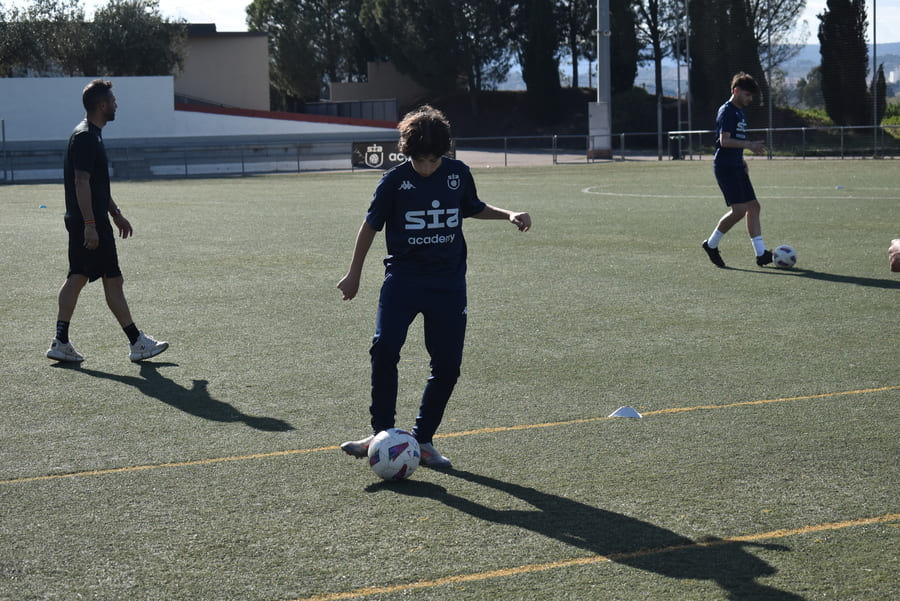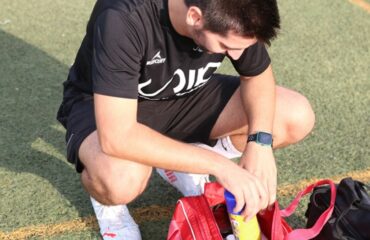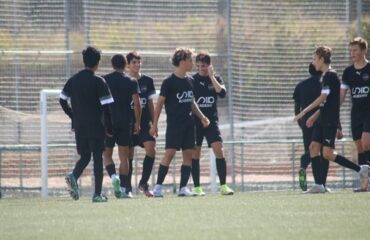A microcycle is a weekly training unit in football, usually made up of 7 days, that allows coaches to strategically organize and distribute physical, technical, tactical, and mental loads. During this period, training is adjusted so that players arrive in peak condition on match day. This high-performance concept is a fundamental part of the training model at SIA Academy.
Table of contents
Structure of the microcycle
In modern football, the microcycle revolves around match day, known as “Match Day” (MD). A typical microcycle layout is as follows:
- MD+1: Active recovery for starters; higher load for substitutes or non-selected players.
- MD+2: Rest or regenerative sessions.
- MD-4: High-intensity physical training and technical work.
- MD-3: Tactical group work and corrections on game patterns.
- MD-2: Strategic preparation and real-game situations.
- MD-1: Short and sharp session focused on physical and mental activation.
- MD: Match day or competitive simulation.
At SIA Academy, this structure is adapted to suit each player’s and team’s specific needs, blending a professional framework with a personalized, developmental approach.

How the microcycle is applied at SIA Academy
José Luis, coach at the academy, explains that the goal isn’t just to compete but to develop players capable of understanding the game and adapting to different contexts:
“We don’t just work to win at the weekend — we aim to form complete players who understand the game, improve their physical condition, and stay motivated throughout the cycle.”
At SIA Academy, weekly microcycles are designed around three pillars:
- Physical loads adapted to the player’s level and moment.
- Individual technical goals incorporated into group sessions.
- Tactical training based on game model, opponent, and context.
In addition, players receive daily feedback, have access to video analysis sessions, and go through regular evaluations that help coaches fine-tune training week by week.
Personalization within the weekly plan
One of the major strengths of the microcycle is its flexibility to adapt to each player. At SIA Academy, this translates into individualized sessions built into the cycle, based on areas for improvement.
For example, a striker may receive extra finishing drills; a full-back may work on crossing and overlapping; and a goalkeeper trains specifically with a goalkeeping coach.
“The microcycle allows us to control what each player needs, week by week,” says José Luis.
“Not everyone is at the same stage of development, and that’s the key to our methodology. It’s professional football applied to player formation.”
This tailored approach supports balanced growth: each player trains with a defined purpose, within a team environment, avoiding overload or undertraining.

Load monitoring and tracking
The success of a microcycle depends largely on how training loads are managed. At SIA Academy, coaches use tools such as:
- GPS technology to measure distance, speed, and effort.
- RPE questionnaires (Rate of Perceived Exertion) after each session.
- Video analysis to assess tactical and cognitive loads.
- Weekly fitness testing to adjust planning.
This gives the coaching staff a precise view of each player’s condition and enables data-driven decision-making. Injury prevention and ongoing improvement are central goals in this process.
Application across different development stages
SIA Academy trains players from youth categories to under-23 level. At every stage, the microcycle is adapted to suit the player’s developmental needs:
- For younger ages, the microcycle is more technical and play-based.
- For older youth players, the tactical and physical load increases.
- At U-23 or elite performance levels, the microcycle mirrors professional environments, with higher intensity, strategic focus, and opponent analysis.
The key lies in balancing development and performance — and that balance is built on a well-planned weekly structure.
The microcycle isn’t just a scheduling tool — it’s the core framework for training in modern football. At SIA Academy, this structure allows for a coherent blend of technical development, physical progress, tactical growth, and mental preparation, all tailored to each player.
It all begins with a well-planned week, and every microcycle is an opportunity to improve. As José Luis summarizes:
“We work with a professional methodology to prepare the players of tomorrow. And it all starts with a strong week of training.”






